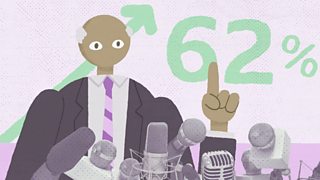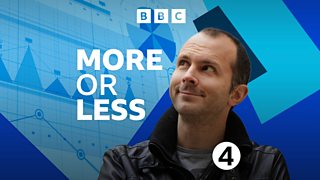
Poisonous Pork? - Retail Sales - Street Numbers - LIBOR
Tim Harford wonders whether Irish sausages really are too toxic to eat? Plus, the oddities of British street numbering.
Poisonous Pork?
Supermarkets withdrew Irish pork from their shelves this week following the discovery that meat from some farms had up to 200 times more dioxins than the recognised safe limit.
Vast quantities of food have had to be destroyed, up to 100,000 Irish pigs are to be culled and jobs in the Irish food industry have already been lost. Are these costs worth paying when weighed against the risks of eating what the tabloids have labelled "poisonous pork" contaminated with "cancer causing chemicals"?
Chris Elliott, Professor of Food Safety at Queen's University Belfast and Simon Wessely, a professor of psychiatry and specialist in communication of risk help presenter Tim Harford weigh up whether or not he should tuck into a potentially contaminated Irish sausage sandwich.
Retail Sales
There has been yet more bad news about the economy. The British Retail Consortium announced that "like for like sales" were down 2.6% on this time last year. Βι¶ΉΤΌΕΔ Business Correspondent Nils Blythe explains why things are not as bad for the retailers as they look.
Street Numbers
Our reporter Chris Bowlby unravels the mysteries of the UK's house numbering systems. He discovers why some streets are numbered odds on one side and even on the other; why some local authorities have banned the use of the number 13; and he visits Bewdley in Worcestershire, home to the most confusingly numbered street in Britain.
LIBOR
The London Interbank Offered Rate - LIBOR - has been dubbed the financial world's most important number. Published each day in the UK, it is the rate at which the banks lend to each other and it influences over $150 trillion (Β£100 trillion) of funds worldwide.
Tim Harford takes a behind-the-scenes look at how LIBOR is set. The Libor number is compiled by putting together the estimates of the cost of borrowing from at least eight banks, discarding the highest and lowest of the sample to leave an average rate which then becomes the daily 'Libor Fix'.
But the figure's validity is being questioned, with critics dubbing it "the rate at which banks won't lend". Presenter Tim Harford is granted exclusive access to the operations centre where the daily rate is compiled.
Last on
Broadcasts
- Fri 12 Dec 2008 13:30Βι¶ΉΤΌΕΔ Radio 4
- Sun 14 Dec 2008 20:00Βι¶ΉΤΌΕΔ Radio 4
Just how reliable is our intuition? Find out with The Open University
OU Connect: Put your brain to the test with our new mind-bending probability problems!


